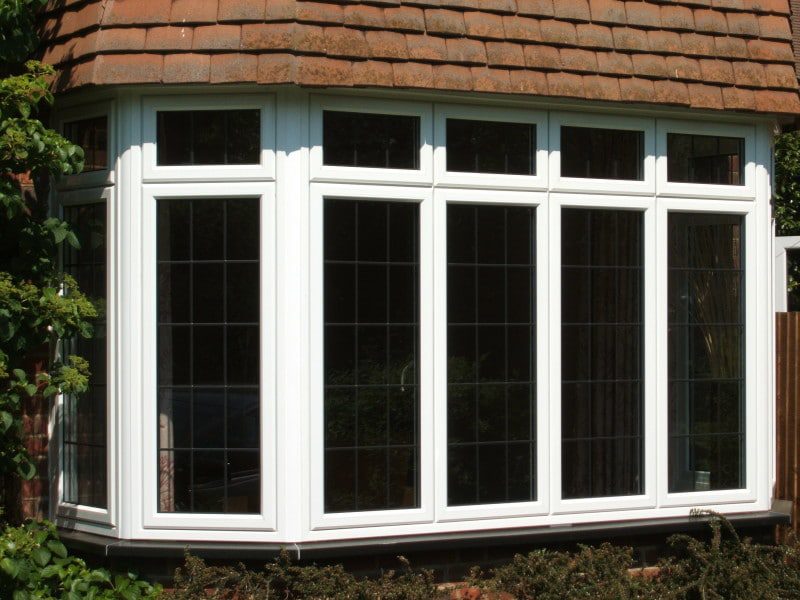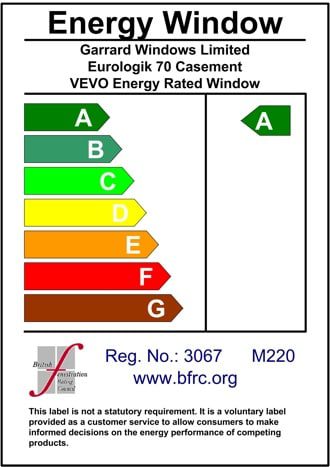The introduction of Window Energy Ratings in 2004 has led to significant improvements in standards and thermal efficiency of windows. Continuing innovation has significantly improved the heat loss and heat gain performance of windows, as well as security and design aesthetics.
In this article, you will find out what Window Energy Ratings are, how we have come to today’s modern thermally efficient windows, and why you should replace your old windows.
How did early double glazing perform compared to today?
Double glazing is believed to have originated in the 1930s in America but took over forty years to reach the UK.
Double glazing became widely produced and popular in the UK in the 1970/80’s and provided an instant improvement to our homes compared with single glazing. The main benefit that two pieces of glass brought over one was simply a sealed unit with air space in between.

The thermal performance of frames was not taken into consideration as early uPVC and aluminium window frames were non-insulated standard sections.
U-values and solar gain were also not a consideration for early double-glazed windows. Whilst single-glazed windows could draw in warmth from the sun, they couldn’t retain the heat coming in. Therefore, adding the extra pane of glass made a noticeable improvement, with the benefits instantly felt.
The early 90s saw the addition of thermally broken aluminium windows and improvements in double-glazing technology. Window systems were designed around aesthetics before performance; today, it is the reverse.
The U-values of early windows were calculated at approximately 5.9W/m2K for single-glazed windows and 2.9W/m2K for double-glazed windows. This is a vast difference between modern windows at 1.4W/m2K and those designed to meet Passivhaus standards, which are well below 1.0W/m2K. Therefore, the benefits of installing modern double glazing are clear.
What is a window energy rating?
Window Energy Ratings were developed to help property owners differentiate between various window systems by labelling how thermally efficient the windows are.
In 2004, Window Energy Ratings were developed and launched by the British Fenestration Rating Council (BFRC), an independent government-supported body. There are now three organisations with Window Energy Ratings schemes: BFRC, BSI and Certass.
Window Energy Ratings take into account heat loss, air leakage, solar and heat gain. The Energy Index is used as an indicator of the heat or energy gained or expelled through any window.
The following values must be considered to arrive at the Window Energy Ratings:
The Energy Index
The Energy Index is used as an indicator for the heat or energy gained as well as expelled through any window.
The U-value
The U-value is thermal transmittance and is where the all-important glass comes in. The higher the specification of the glass, the lower the U-value.
The G-value
G-value is the solar gain/loss through windows. The higher the G-value, the more solar gain through a window.
The L-value
The L-value relates to air leakage through a window, and with any well-designed, well-sealed and weather-resistant window, this figure must be zero.
Window Energy Ratings scale
Letters are used for the Window Energy Ratings scale. The letter assigned takes into account the whole window: the frame, material, design and glass.
Each organisation uses a rainbow-coloured scheme for their scale so you can compare products, but what is confusing is the scale range is different for each one, A being the most efficient:
British Fenestration Rating Council: A++ to E
British Standards Institution: A++ to G
Certass: A* to E

What do we expect from modern double-glazed windows?
Irrespective of material, double glazing must be attractive, secure, weather resistant and energy efficient.
It is Building Regulations that now dictate the energy efficiency of windows, and phrases such as “will meet and exceed current and future Building Regulations” are well-used by many sales window pitches. We now expect our windows to keep the heat in and play their part in reducing heat loss from the home and ultimately reducing energy bills.
Triple glazing is the latest trend to hit the UK home improvement market, although it has been installed in windows in colder climates for many years. Today, window designers are embracing modern materials such as polyamide, polyurethane, argon gas, warm edge spacers, and low emissivity coatings to work together to give us greater energy-efficient windows and doors.

Why are Window Energy Ratings important?
What is important to know is Window Energy Ratings are a legal requirement. In order to comply with the latest Building Regulations, windows must have a Window Energy Ratings of band B or higher. These regulations may change in 2025 as part of the government Future Homes Standard.
Window Energy Ratings are also required for Energy Performance Certificates (EPCs) for homes sold and rented.
You also need to know about U-values when replacing windows and doors, find out more here.
Investing in windows with Window Energy Ratings of B or higher makes your home more attractive to buyers, particularly with rising energy costs, and will make your home significantly more comfortable by minimising heat loss and drafts, thus reducing your energy bills. Heat gain into the home will also be reduced on hot summer days, making you feel cooler.
It is also a legal requirement for you to obtain an installation certificate as part of the Part L building regulations, which you must produce when you sell your home. It is essential that you have your new windows installed by a relevant, qualified person so they are fitted correctly. You must always check their credentials and ensure they comply with building regulations.
If you would like help choosing a window product and installer, we have over 35 years of experience and knowledge, which we would happily share, just get in touch.










